
You don’t decide only once to be an antiracist.
Instead, it’s a decision that circumstances, including your own character, will demand of you repeatedly. “The mind is complex, and when we think of any personality trait that we’re striving to get away from” — like racism — “it’s an everyday process,” author and historian Ibram Kendi told a Bates audience on Oct. 23.
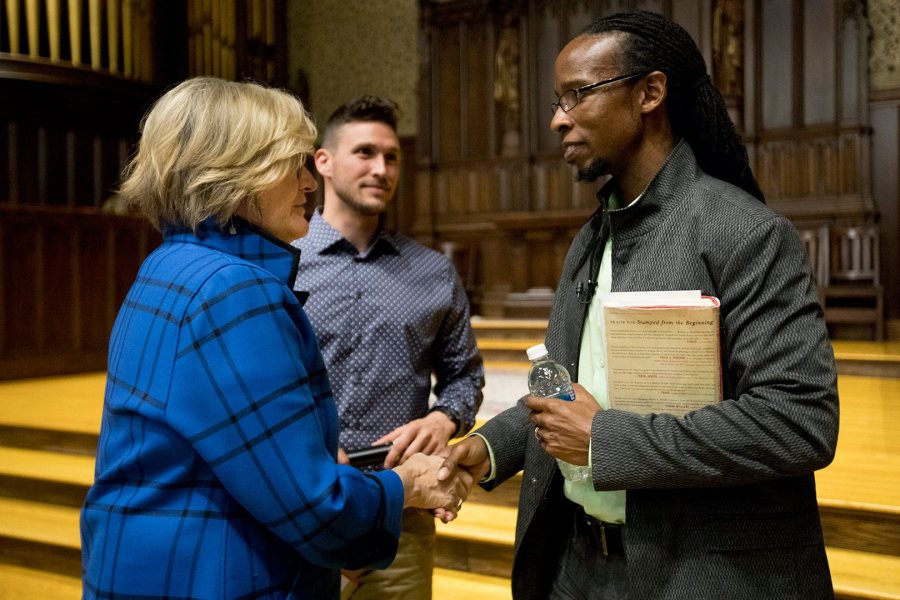
Author and historian Ibram Kendi, at right, greets Bates President Clayton Spencer and Christopher Petrella ’06 of the Office of Equity and Diversity on Oct. 23. (Phyllis Graber Jensen/Bates College)
“We have to be conscious of it on a regular basis in order to not be that way anymore,” he said.
Kendi was at Bates to give a talk titled “How to Be an Antiracist.” It’s a prescription he’s abundantly qualified to offer. Professor of history and international relations at American University, he’s also the founding director of the Antiracist Research and Policy Center at American.
Moreover, Kendi wrote Stamped from the Beginning: The Definitive History of Racist Ideas in America, which was awarded the 2016 National Book Award for Nonfiction, making Kendi the youngest scholar in 30 years to receive that honor.
Bates President Clayton Spencer, who described Stamped from the Beginning as a “gut renovation of our collective thinking about race,” welcomed a large audience to Gomes Chapel for Kendi, who offered a 50-minute talk as well as subsequent Q&A and booksigning sessions.
Introducing Kendi was Christopher Petrella ’06, associate director of programs for Bates’ Office of Equity and Diversity. Petrella’s generous preface concluded with an apt quotation from the abolitionist Frederick Douglass (who, he noted, spoke in Lewiston at Bates’ invitation in 1874): “Power concedes nothing without a demand. It never did and it never will.”
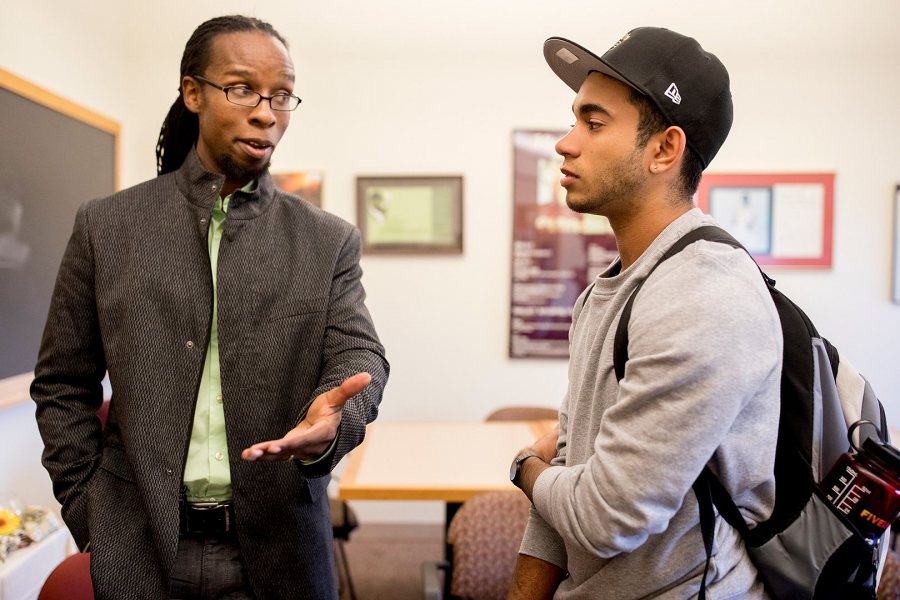
Historian and author Ibram Kendi, left, chats with Kingdell Valdez ’19 of North Andover, Mass. Valdez met Kendi during a session of the course “Introduction to African American Studies” on Oct, 23, prior to Kendi’s evening talk. (Phyllis Graber Jensen/Bates College)
Once at the pulpit, Kendi responded with his own Douglass quote, one from 1874 that, he said, sums up the entire sorry history of racist thought: “When men oppress their fellow men, the oppressor ever finds in the character of the oppressed, a full justification.”
Kendi was pitch-perfect for the Bates audience. While steps to becoming an antiracist constituted the heart of his speech, he framed that checklist with arguments about American racism that were occasionally surprising and always thought-provoking.
“How and why did racist ideas become, literally, our common sense — in which racist ideas make sense to us, and antiracist ideas seem radical, extreme, and completely nonsensical and illogical?” Kendi wondered.
“How and why did racist ideas become, literally, our common sense?”
He said that writing Stamped from the Beginning, which chronicles that ideological evolution over more than five centuries to the present, led him to a concept he calls the “dual racial history of America” — a dynamic process, like something from Newtonian physics but a lot harder on people. In this duality, every evidence-based effort to undo racism provokes a new and more sophisticated defense of racism.
Take, for example, the Jim Crow laws that followed the defeat of the South in the Civil War. And the proclamation of a “post-racial era” following the election of the nation’s first black president. Post-racism, Kendi said, is “possibly the most sophisticated racist idea ever constructed….It is a representation of every racist idea in history.”
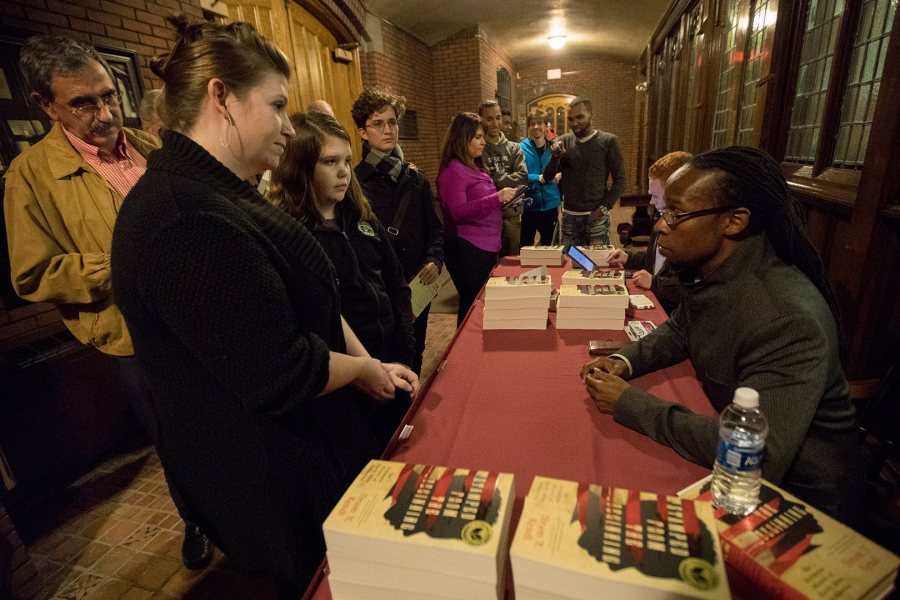
Following Kendi’s talk in the Gomes Chapel, Ella Fenderson, age 11, asks Ibram how elementary school students can talk about race in school, as her mother, Grace Kendall, director of design services for the Bates Communications Office, looks on. (Phyllis Graber Jensen/Bates College)
He argued that ultimately there are only two causes of racial tension, or only two exits from any discussion of racism. Either the inferiority of some races to others is a true fact, or the existence of discrimination is. You can’t have it both ways, or neither way.
So if you accept the premise of post-racism — that discrimination doesn’t exist — then all that’s left is the inferiority of one group or another. And away you go, down the road to growing your own personal racist beliefs, which are all the more convincing because you thought of them yourself.
In Stamped, Kendi distinguishes between producers and consumers of racist ideas, and focuses on the producers. What motivates them? That led him to another key element in the talk, and one that stands conventional wisdom on its head.
It’s commonly believed that ignorance and hate fuel racist ideas and ideologies, and those in turn are codified in racist policies. But just the opposite is true, Kendi said.
He argued that people implement racist policies to protect their own political, cultural, and economic interests and then, perhaps on the principle that the best defense is a good offense, deploy racist ideas to advance those policies.

Rakiya Mohamed ’18 of Auburn, Maine, poses a question to historian Ibram Kendi during a session that followed Kendi’s Oct. 23 talk at Bates. (Phyllis Graber Jensen/Bates College)
“It shocked me to find that,” he said, “because of course I had been taught that historically, the main cradle of racism had been ignorance and hate.”
Kendi noted that no group of people he studied for Stamped considered their ideas racist. (And still today it’s generally the racists who cry, “I’m not a racist.”) “People believed that black people were literally a different species of being that was closer to animal kind — ‘That’s not a racist idea, that’s science.’”
Getting to the heart of his address, Kendi structured his rules for being an antiracist in a logical historical order:
Reject what “segregationist” ideas, ideas based on perceived functional biological distinctions between races. Kendi cited research from 2000, based on the genomic mapping of people representing five races, that showed that 99 percent of their genetic makeups were the same — and the remaining 1 percent was just scientists’ reluctance to pronounce an absolute. “There’s no such thing as biological races,” he said.
Bolstering his case with more medical facts, Kendi took on the widespread belief that sickle-cell anemia is a “black disease.” Instead, he explained, the disorder collaterally confers some resistance to malaria, and so is found more often among populations well-established in malarial regions — not just in Africa. (A discussion about sickle-cell that Kendi had with his wife, a doctor, convinced her that a white child in her emergency room actually did have sickle-cell, despite the “black disease” label.
Recognize that different races are equal culturally as well as biologically. “A dominant strain within abolitionist thought,” Kendi said, “was this idea that slavery, of course, was wrong — but one of the reasons it was so bad is because it was preventing black people from receiving the fruits of superior New England culture.
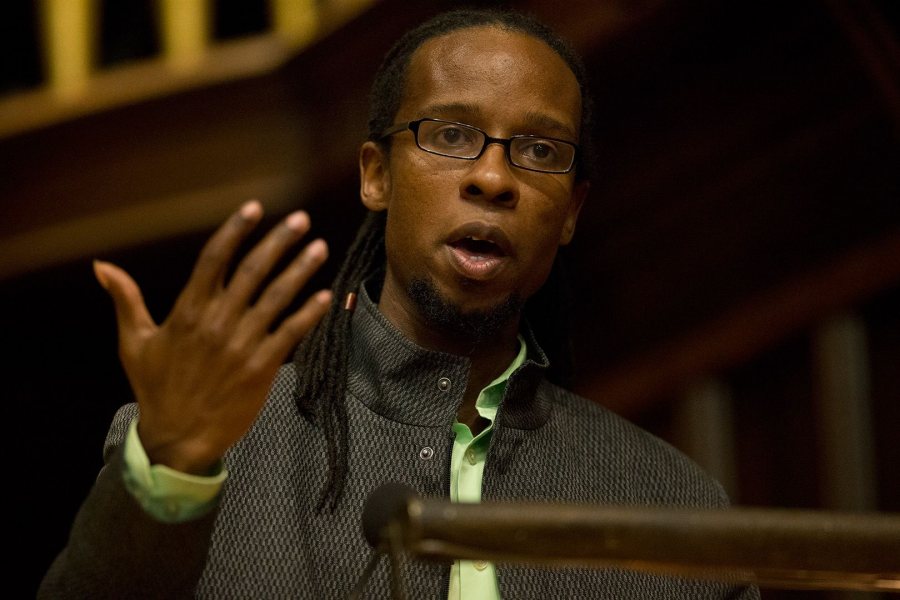
In his talk “How to Be an Antiracist,” Kendi combined logic, humor, and moral suasion to powerful effect. (Phyllis Graber Jensen/Bates College)
“Following the Civil War, there were many well-meaning former abolitionists who were like, ‘We finally now have the ability to go down into the South and civilize some of these people.’ Probably some of your well-meaning ancestors went down there and did that” — albeit with antiracist motivations, as they rejected the racist notion that former slaves couldn’t be civilized because they were biologically inferior.
But in fact, Kendi said, slaves brought culture from Africa and developed culture in slavery (and elements from those cultures, obviously, remain vital in contemporary U.S. culture). If you want to be an antiracist, don’t judge other cultures by the standards of your own culture — that only creates a hierarchy in which other cultures can’t prevail.
Recognize behavioral equality. We’ve been trained to see blacks as dangerous, a stereotype supposedly supported by statistics that correlate high rates of violent crime, arrests, and incarceration with African Americans. But, as Kendi explained, rates of arrest and incarceration don’t correspond to rates of actual crime (thanks in part to prejudicial policies like racial profiling or sentencing guidelines that are effectively race-based).
As for violent crime, he pointed out that crime rates in middle- and upper-class black neighborhoods parallel their white equivalents: rates are much lower than in low-income areas. What high crime rates really correspond to, regardless of race, is poverty. To reduce violent crime, invest in job creation.
Practice an intersectional analysis of racism. “It’s nearly impossible to be an antiracist and not also be a feminist. It’s very difficult to be an antiracist and simultaneously be an elitist. It’s pretty much impossible to be an antiracist and also be homophobic,” Kendi says. In other words, racist thinking doesn’t have to apply to race — it can be racialized thinking that justifies prejudice against all manner of identities.
“What I’m saying ultimately is that when you think about antiracism, you should think not just about equality between racial groups — you should also think about equality between all of the racialized groups within your race and without.”
Kendi’s conclusion wasn’t surprising, but was certainly uplifting. “What becomes the activity of the antiracist?” he asked. “I would encourage each of you, when you look out at racial disparities, to see not what’s wrong with people, but what’s wrong with policies.”
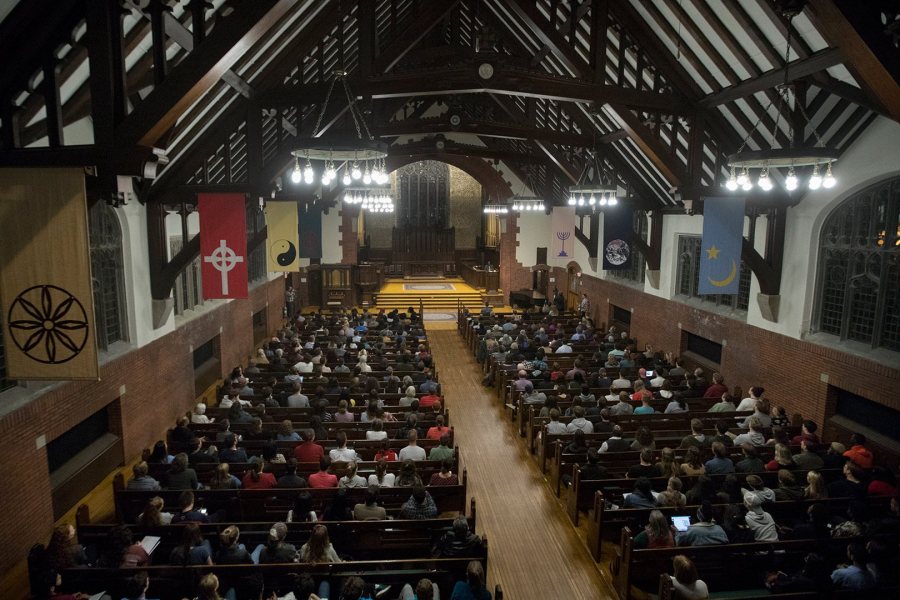
The audience listens to author Ibram Kendi in Bates’ Peter J. Gomes Chapel on Oct. 23. (Phyllis Graber Jensen/Bates College)


